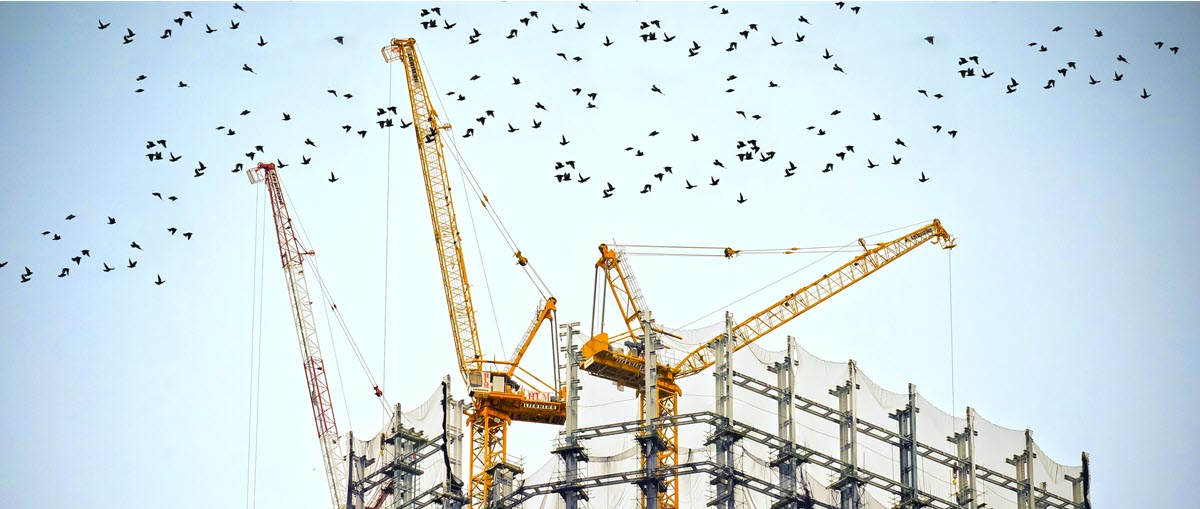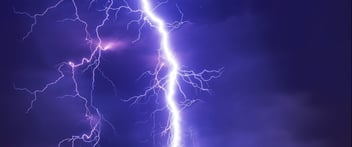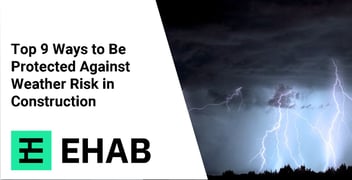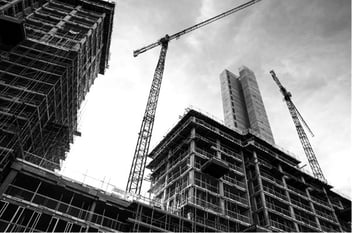In the construction industry, severe weather is always a risk. But when you're working on a tight schedule and budget, any delay can be costly.
In fact, adverse weather is the third biggest cause of missed milestones in construction projects. As we face an accelerating climate crisis, these risks are only going to increase.
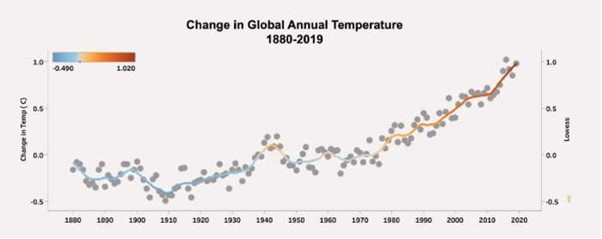
(Image source: weforum.org)
Severe weather can take many forms – from extreme heat and cold to hurricanes and floods. Below are 10 examples of weather risk that can cause delays, costing construction contractors and clients time, and money.
Extreme Heat
One of the most significant weather risks is extreme heat. Heat waves can cause dehydration and heat stroke and can make working conditions intolerable. According to the UK's National Health Service (NHS), extreme heat waves led to the deaths of over 2,800 people in 2022.
Aside from health risks, when concrete is poured in hot weather, the drastic changes in ambient temperature often cause it to crack as it dries. As a result, extra precautions must be taken such as adding extra water to the surface, otherwise construction activity could slow down during the summer months. Risk management plans must be put in place to mitigate such weather risks. These plans typically involve monitoring weather conditions closely and making necessary mitigations and adjustments to the construction schedule.
Extreme Cold
Extreme cold is another serious construction weather risk. Just as high temperatures can cause problems, so can lows. Concrete work is particularly vulnerable to cold snaps – if the temperature dips below 4.4 degrees centigrade, freezing before the concrete can cure properly, the chemical reactions that cause it to strengthen can lead to it being damaged beyond repair.
What's more, frostbite and other cold-related injuries are always a risk when working in freezing conditions.
Extreme cold can also cause metal pipes to contract and crack and make it difficult to apply paint or sealants evenly. As a result, construction crews must take extreme care when working in freezing conditions and be sure to take all necessary safety precautions.
High Winds
Strong winds can pose a severe risk during construction projects. High winds can damage equipment and materials, and they make working conditions very dangerous for crews. In fact, high winds are often responsible for demolition accidents when scaffolding or roofs collapse unexpectedly.
Wind speed exceeding 30 mph is considered high, and wind gusts can have severe consequences. As a result, construction crews must take special care to secure equipment and materials during severe weather conditions. Lifting operations are also impacted by even light winds, so it's essential to know what local conditions are before commencing operation.
Hurricanes and Tropical Storms
Hurricanes and tropical storms are severe weather events that can cause extensive damage to buildings under construction and make work sites inaccessible for days or weeks at a time. In February 2022, Storm Eunice ripped through the UK, leaving a trail of death and structural damage.
The Association of British Insurers estimated the damage to be as high as £300 Million in damages across the UK economy. Construction had to cease, and many construction projects bore the brunt of the storm.
Severe weather events like this are bad for the construction industry because they can cause physical damage to incomplete buildings and equipment and significantly delay progress on construction timelines. Severe weather events can have a ripple effect on the entire economy as they often disrupt supply chains and hinder transportation.
In construction, severe weather events can be particularly costly as they often force contractors to purchase expensive last-minute materials or pay overtime wages to catch up on lost time.
Tornadoes
These powerful storms have been known to completely level entire neighbourhoods, taking homes, businesses, and construction projects with them. Tornadoes can cause extensive damage to buildings, even those that are just in the process of being built.
In May 2011, an EF5 tornado tore through Joplin, Missouri, causing millions in damages to hundreds of construction projects. The tornado was one of the deadliest and most destructive in US history, devastatingly affecting the local construction industry.
Flooding
Flash flooding can quickly turn a construction site into an unusable muddy mess - not to mention put workers at risk of being swept away by fast-moving waters. And even if the flooding isn't severe enough to stop work completely, it can still damage equipment and delay progress as crews clean up the mess left behind.
Snowstorms and Blizzards
While a few inches of snow might not seem like much of a problem, drifting snow can quickly pile up and make roads impassable for both vehicles and workers alike. Added to this, when strong winds are present, as they often are during winter storms, the resulting blizzard conditions can be extremely dangerous.
Avalanches and Landslides
Construction crews working in mountainous regions must constantly be on the lookout for these threats, particularly during springtime melting when avalanches are most likely to occur.
Drought
When drought conditions persist for weeks or months on end, it can impede progress on outdoor construction projects as workers contend with dust storms, wildfires, and other dangers posed by lack of water.
Wildfires
While wildfires are often associated with drought conditions, they can also occur during other weather patterns, particularly in areas that are prone to dry lightning strikes.
Also, construction sites located near forests or grasslands are especially vulnerable to wildfires. These fires destroy vegetation (which can lead to soil erosion) and produce large amounts of smoke - yet another hazard for workers trying to do their jobs.
As the climate crisis continues to worsen, we can expect to see more extreme weather conditions that will pose a risk to construction projects. As such, it is important for construction companies to have a plan in place to deal with weather-related risks.
Be Prepared for Any Extreme Weather Event with EHAB
The way to ensure you're always ready for whatever the weather throws at you is to use the EHAB weather risk management platform.
EHAB empowers planning teams with hyper-local climate-adjusted datasets, machine learning and industry-specific planning features. With EHAB, construction companies can be better prepared for weather-related risks, helping to avoid the significant costs of delays and unpredictable disruptions. For more information, book a free 30-minute demo.
